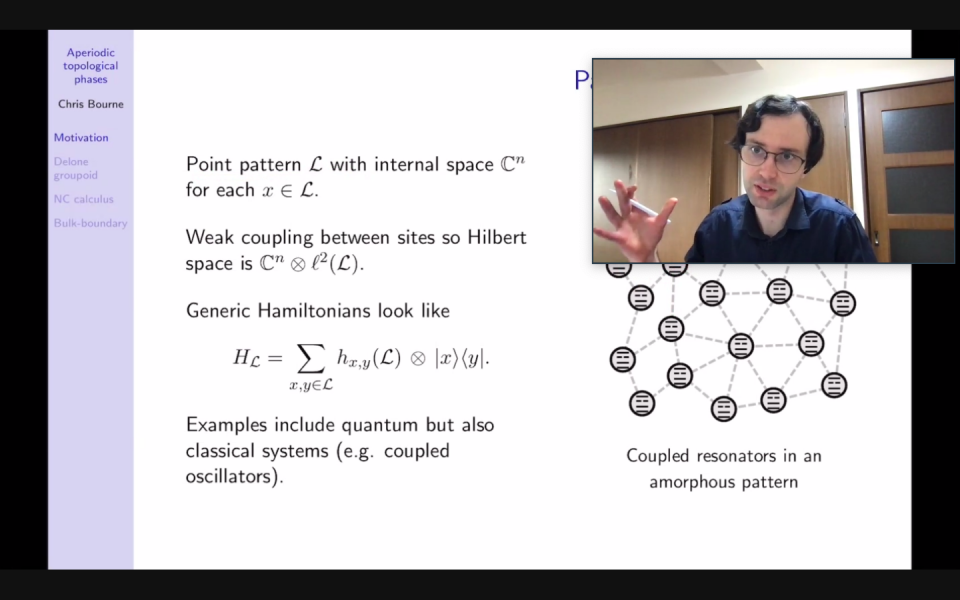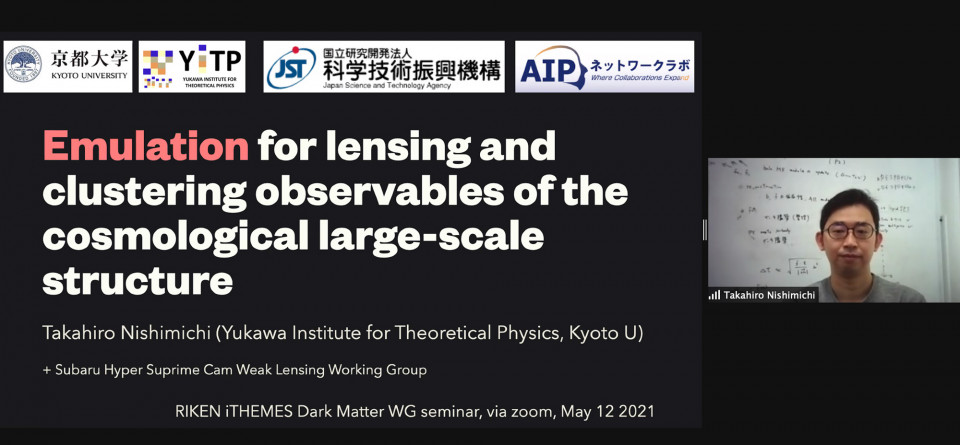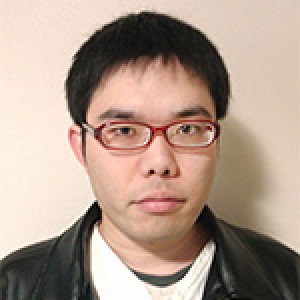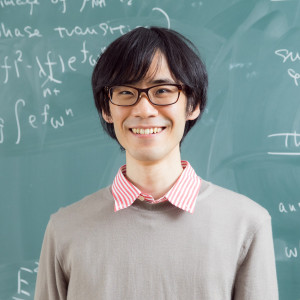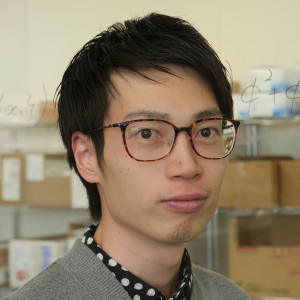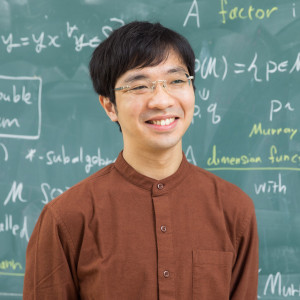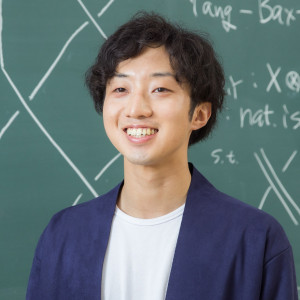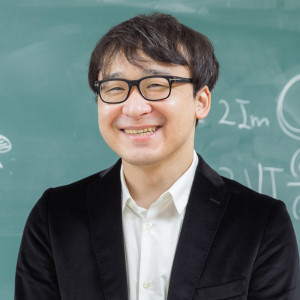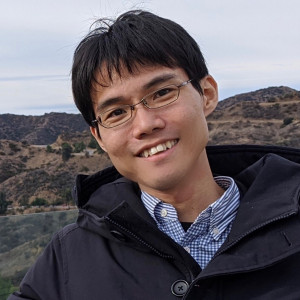Volume 150
Back to Newsletter List
Event Schedule
Events for the 4th week of May 2021
2021-05-13
Wednesday, May 19, 13:00- Information Theory SG Seminar
Friday, May 21, 12:30- Coffee Meeting
Press Release
Mystery of Wasps That Produce Few Males Solved
2021-05-11
A collaborative research group, including Dr. Ryosuke Iritani (Research Scientist, iTHEMS), has solved the mystery of wasps that produce only a few percent of males.
See related link for details.
Reference
- Jun Abe, Ryosuke Iritani, Koji Tsuchida, Yoshitaka Kamimura, and Stuart A. West, A solution to a sex ratio puzzle in Melittobia wasps, ,, PNAS 118 (20) e2024656118 (2021), doi: 10.1073/pnas.2024656118
Seminar Report
Quantum Matter Seminar by Prof. Christopher Bourne on May 12, 2021
2021-05-14
Quantum Matter Study Group invited Prof. Christopher Bourne to give a talk on aperiodic and amorphous topological phases on May 12th, 2021. In the beginning, he reviewed topological phases in lattice systems and introduced integer Chern numbers. To generalize the topological phases, we extend the lattice to Delone sets, including quasicrystal and amorphous solid. The main talk focused on the topological phases for those types of solid. He provided examples to show the amorphous patterns exhibit gapped phases. He showed that the invariants can be defined as noncommutative Chern number and computed the non-zero Chern number in the gapped phase. It is interesting to see that quasicrystal and amorphous solid share similar integer Chern numbers, and the idea can be further extended to different spatial dimensions with symmetries. We thank Prof. Bourne for giving a wonderful talk.
Reported by Ching-Kai Chiu
Aperiodic and amorphous topological phases
May 12 (Wed) 17:00 - 18:15, 2021
Seminar Report
DMWG Seminar by Dr. Nishimichi: Cosmology, the Fundamental for the DM on May 12, 2021
2021-05-12
What we have known about dark matter (DM) is that it occupies ~25% of the energy density of our Universe. The precise determination of the cosmological parameter is crucially important for determining this abundance of DM. Another important point here is that one the value of those parameters are determined assuming a specific cosmological model, such as vanilla (i.e., the simplest) lambda CDM and so on. So we might have a different DM relic density if the assumption of the simplest Lambda-CDM breaks. Hence the examination of the cosmological parameters and the model behind them is important two-fold for DM physicists.
The basic observable for the cosmological parameter is cosmic microwave background, the large-scale structure, and so on. Those data are huge at the raw level, and still so large at the scientific data level. In order to derive a handful of cosmological parameters from such data, one must calculate the so-called summary statistics. By matching the summary statistics in simulation data of specific cosmological models (vanilla lambda-CDM, for example) adopting MCMC techniques, we arrive at the cosmological parameter that we need. Note that there is always degeneracy between cosmological parameters derived from observational data.
The matching between the observational and simulated summary statistics takes a lot of costs in the calculation. By adopting analytical formula, the calculation becomes much quicker while the precision decreases at some level. The emulator, which is developed in the Dark Quest Project, solves this computational problem. It enables us to speed up the calculation while keeping the precision. The degeneracy between the parameters also becomes accessible. The precise summary statistics such as halo mass function, halo-matter cross-correlation, and far more... is crucially important for DM study. Halo formation theory and weak lensing search are kinds of examples for applications.
With this new fantastic open-source tool of Dark Quest Project, the future for DM search study emerges definitely. We are looking forward to seeing a lot of cutting-edge as well as steady works implemented with this item in the near future!
Reported by Nagisa Hiroshima
Emulation for lensing and clustering observables of the cosmological large-scale structure
May 12 (Wed) 10:00 - 11:00, 2021
Upcoming Events
Seminar
iTHEMS Biology Seminar
Modeling Membrane Morphological Change during Autophagosome Formation
May 14 (Fri) 10:00 - 11:00, 2021
Yuji Sakai (Visiting Scientist, RIKEN Interdisciplinary Theoretical and Mathematical Sciences Program (iTHEMS) / Assistant Professor, Graduate School of Medicine and Faculty of Medicine, The University of Tokyo)
Membrane-bound organelles compartmentalize eukaryotic cells and adopt various characteristic shapes such as disk-shaped, tubules, spherical vesicles, and their intermediate structures. Organellar morphology is regulated by protein and lipid compositions. Because organellar shape directly relates to organellar function, it is important to understand the mechanisms regulating organelle morphology. In autophagy, the morphologies of the isolation membrane change from disk- to cup-shaped, closed spherical double-membrane structure. Eventually the membrane engulfs the cytoplasmic materials. In this study [1], we investigate the dynamics of the continuous membrane morphological transition in autophagy, which is governed by the spatiotemporal regulation of curvature generators.
*Please refer to the email to get access to the Zoom meeting room.
Reference
Venue: via Zoom
Event Official Language: English
Seminar
iTHEMS Math Seminar
Geometry of canonical metrics on Kähler manifolds
May 14 (Fri) 16:00 - 18:10, 2021
Eiji Inoue (Special Postdoctoral Researcher, RIKEN Interdisciplinary Theoretical and Mathematical Sciences Program (iTHEMS))
The aim of this talk is to report recent trends in Kähler geometry. Kähler geometry consists of two aspects: the one is algebraic geometry and the other is metric geometry.The first one hour is an introduction for non-mathematicians.
I begin with a simple example of algebraic variety from ancient Greek, which I believe is the simplest example illustrating motivation for compact complex manifolds.
On the other hand, I explain the first motivation for canonical metrics in Kähler geometry via Riemann’s uniformization theorem.The last one hour is an introduction to recent trends in Kähler geometry, especially Kähler-Einstein metrics.
The existence of Kähler-Einstein metrics turns out to be related to geometry of degenerations of space, which is so called Yau-Tian-Donaldson conjecture.
I explain various aspects of this topic. We encounter deep studies in metric geometry, birational geometry and non-archimedean geometry.
I finally explain recent breakthrough on Kähler-Ricci flow.The goal of this talk is the starting point of my study. I briefly explain my study if time permits.
Venue: via Zoom
Event Official Language: English
Seminar
Information Theory Seminar
Journal Club: Intrinsically Disordered Region (IDR)
May 19 (Wed) 13:00 - 14:00, 2021
Kyosuke Adachi (Special Postdoctoral Researcher, RIKEN Interdisciplinary Theoretical and Mathematical Sciences Program (iTHEMS) / Special Postdoctoral Researcher, Nonequilibrium Physics of Living Matter RIKEN Hakubi Research Team, RIKEN Center for Biosystems Dynamics Research (BDR))
A class of protein domain, which is called intrinsically disordered region (IDR), is known to take no rigid three dimensional structure. Recent studies have shown that IDRs can show biological functions through phase separation, and it is important to clarify what kind of amino acid sequence of IDR leads to phase separation and what kind of mutation results in malfunction. In this journal club, I will discuss these topics by reviewing recent papers.
*Detailed information about the seminar refer to the email.
Venue: via Zoom
Event Official Language: English
Seminar
iTHEMS Math Seminar
Loewner's theorem for maps on operator domains / The structure of maps on the space of all quantum pure states that preserve a fixed quantum angle
May 24 (Mon) 16:00 - 18:10, 2021
Michiya Mori (Special Postdoctoral Researcher, RIKEN Interdisciplinary Theoretical and Mathematical Sciences Program (iTHEMS))
This talk is divided into two independent topics.
In the first part of my talk we consider the order structure of hermitian matrices. Given two matrix domains (open connected sets of n-by-n hermitian matrices), what is the general form of order isomorphisms between them? I will explain that there is a complete correspondence between the class of order isomorphisms and that of biholomorphic mappings.
In the second part we consider the metric structure of the space P(H) of all quantum pure states (= the projective space of a complex Hilbert space H). Wigner's theorem asserts that every surjective isometry of P(H) onto itself is implemented by a unitary or an antiunitary operator. Uhlhorn generalized Wigner's theorem by showing that every bijective transformation of P(H) that preserves orthogonality is implemented by a unitary or an antiunitary operator. We consider some variants of Uhlhorn's result.
The first part is joint work with P. Semrl (Univ. of Ljubljana), and the second part with G.P. Geher (Univ. of Reading). Only basic linear algebra is assumed in both parts.
Venue: via Zoom
Event Official Language: English
Person of the Week
Self-introduction: Eiji Inoue
2021-05-13
I'm Eiji INOUE, a new member of iTHEMS as a special postdoctoral researcher in mathematics. My current interest is Kahler geometry of algebraic variety. Algebraic variety is (locally) the solution set of polynomials, say x^2 + y^2 -1 = 0. While its origins trace back to ancient Greek, it still fascinates many mathematicians: you can find many Fields medalists, including all Japanese medalists, are awarded for their monumental works on algebraic variety.
Calabi-Yau variety is a special class of algebraic varieties attracting attention in string theory. A Calabi-Yau variety admits a Kahler-Einstein metric, which can be thought of as a canonical 'shape' of the variety. Though a general variety in other classes does not necessarily admit such canonical metrics, it is gradually believed by not a few specialists that any variety has a unique degeneration to another variety admitting a canonical metric in some sense. My recent study gives a mathematical formulation of this problem.
This framework has a special aspect: it naturally possesses a new parameter λ which plays a role analogous to the inverse temperature. When λ is sufficiently low, canonical metrics, which you may see as 'equilibrium states' of the variety, are unique if it exists. On the other hand, when λ is sufficiently high, canonical metrics are not unique and the absolutely stable states may break the symmetry of the variety. It is reminiscent of phase transition. I am looking forward to discussing this phenomenon with researchers in other areas.
Person of the Week
Self-introduction: Kazuki Kannaka
2021-05-12
I’m Kazuki KANNAKA, a special postdoctoral researcher (mathematician) in iTHEMS. I am interested in the global properties of locally homogeneous manifolds, especially those with Lorentzian structures (e.g., anti-de Sitter manifolds) which are used as models of spacetimes. I am currently studying the spectral theory of the hyperbolic Laplacian (the Klein-Gordon operator), which is a differential operator defined “intrinsically” on such manifolds. In iTHEMS, I would like to find interactions with other various research areas.
Person of the Week
Self-introduction: Michiya Mori
2021-05-11
I am Michiya Mori, a new member of iTHEMS as a Special Postdoctoral Researcher. I received my Ph.D. at The University of Tokyo in March 2021. I am working on the mathematical theory of operator algebras. I am interested in examining certain structure of a collection of linear operators acting on a Hilbert space. In particular, I have studied the metric structure and the (lattice) order structure of, e.g., a domain of bounded self-adjoint operators, the collection of self-adjoint projections, the unit sphere. My research is often base on the classical study by, for example, von Neumann, Wigner, Loewner and Kadison, rather than modern operator algebraists. I believe that my research is closely tied with various fields of theoretical sciences. I hope to develop my research in an interdisciplinary direction.
Person of the Week
Self-introduction: Mizuki Oikawa
2021-05-11
I am Mizuki Oikawa, a Junior Research Associate (JRA) student who joined iTHEMS in April 2021. I am interested in the mathematics of two-dimensional conformal field theory, such as vertex operator algebras, conformal nets, and Segal conformal field theories. In particular, my interest includes moonshine phenomena, which connect finite groups and modular forms via conformal field theories. I look forward to interacting with iTHEMS members in different research areas.
Person of the Week
Self-introduction: Hidetoshi Taya
2021-05-10
My name is Hidetoshi Taya. After finishing my Ph. D in The University of Tokyo in 2017, I had several postdoctoral positions at iTHEMS RIKEN (2017-18), Fudan University (2018-20), and Keio University (2020-21) and then come back to iTHEMS, RIKEN from April, 2021 as a special postdoctoral researcher.
I am a theoretical physicist working on (but not limited to) particle and nuclear physics. In particular, I am interested in non-perturbative and non-equilibrium phenomena driven by strong fields, and studying their application to, for example, heavy-ion collisions, intense lasers, and condensed-matter systems. I am also interested in application of mathematical methods such as the resurgence theory and the exact WKB method. I look forward to interacting with iTHEMS members and to enjoying something new/interesting together.
Person of the Week
Self-introduction: Yuya Kusuki
2021-05-10
I am Yuya Kusuki. I joined iTHEMS in April 2021. I am studying the theoretical particle physics. My particular interest is conformal field theory in the context of the AdS/CFT. For example, I would like to understand “Which spectrum and which coupling constants are required to reproduce the semiclassical gravity?”, “Whether or not does a pure gravity on AdS exist?”, “What is the precise definition of the quantum chaos in AdS/CFT?” and so on. For this purpose, I mainly utilize (i) some information tools, developed in the interface between quantum gravity and quantum information, and (ii) conformal bootstrap equation.
I am looking forward to collaborating with researchers in various fields at iTHEMS. Since my research is based on gravity, conformal field theory, information theory, condensed matter, that is, many topics, I believe such a cross-disciplinary collaboration provides wonderful results.
If you would like to cancel your subscription or change your email address,
please let us know via our contact form.
Copyright © iTHEMS, RIKEN. All rights reserved.




